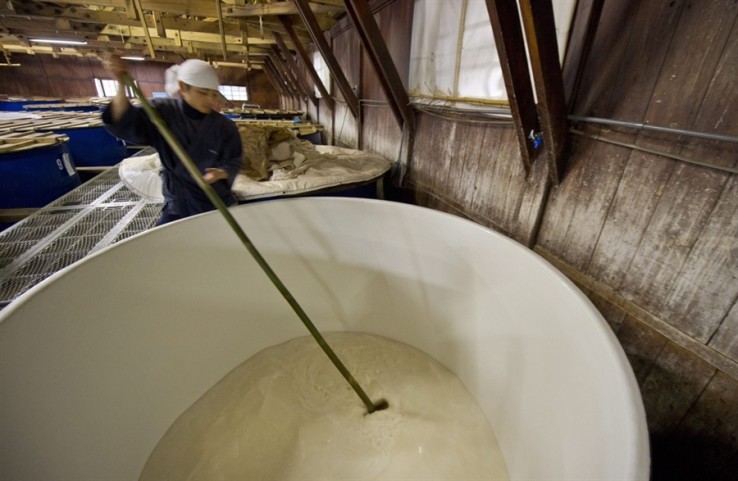Sommelier Talk: Episode 2 – Differences in Fermenting Sake/Wine
Let’s take a look at sake from a brewing point of view. There are three major differences in sake brewing compared to wine.
First, is the role of the koji mold. It’s the all-mighty koji that drives the conversion of rice starches into fermentable sugar. In wine brewing, fermentable sugars already present in the grape are converted directly into alcohol. Sake uses ki-koji or yellow koji-kin Aspergillus Oryzae to break down starches into fermentable glucose molecules. This koji, which by the way is unique only to Japan, has numerous applications to other fundamental foods, such as miso and soy sauce.
Second, Sake brewing involves a process called Sandan-Jikomi. It’s a very complicated brewing procedure developed over hundreds of years of trial and error, and perfected explicitly to suit the warm and humid climate of Japan. It’s a brewing art form like no other in the world, where ingredients are added in three precisely measured stages to minimize dilution of the sake mash, and in order to maximize yeast propagation.
The final major point of differentiation is Heiko Fukushiki, or multiple parallel fermentation. In multiple parallel fermentation, the deconstruction of long starch molecules into sugar (via Koji enzymes) occurs simultaneously with the fermentation of the newly freed glucose molecules. This multiple parallel fermentation of sake is unique in that both the breakdown of starches into glucose, and the conversion of glucose into alcohol occurs simultaneously, and in the same container. Wines involve only a single fermentation, from naturally existing sugar into alcohol.
Koji, Sandan-Jikomi, and Heiko Fukushiki are the unique qualities that differentiate sake from wine, and the reason why sake can brew to reach over 20% alcohol, the highest level of any brewed product in the world!


